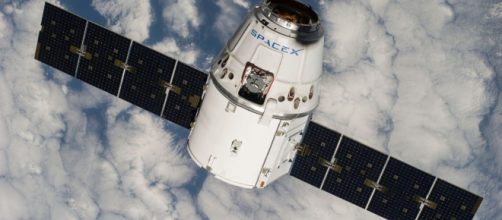SpaceX launched another Dragon cargo ship to the international space station Saturday on top of a Falcon 9 from the Kennedy Space Center. The Dragon will take a three days journey before being captured by the ISS’s robot arm to dock with the orbiting space laboratory, delivering needed supplies. Not only did SpaceX recover the first stage of the Falcon 9, an operation the company is starting to seem incredibly easy, but it used a Dragon that had already flown to the ISS and returned to Earth previously.
More progress with reusable spacecraft
SpaceX has become the first private company to have flown a spaceship in orbit a second time, a feat only accomplished by NASA’s space shuttles, the Air Force’s X-37B space plane, and a Soviet-era VA spacecraft.
The Dragon contained close to 6,000 tons of supplies, including fruit flies as part of an experiment to study cardiovascular health and mice to study bone loss in space.
The Dragon cargo ship also carried an instrument called NICER that will be bolted on the outside of the ISS as a way to study neutron stars. The Dragon will be loaded with cargo to bring back to Earth and will splash down in the ocean in due course, perhaps to be reused a second time.
The economics of reusable spacecraft
SpaceX would eventually like to reuse all the parts of the Falcon 9 as well as the Falcon Heavy, due to having its first test launch later this summer. The idea is that if rockets and spacecraft were not thrown away after every flight, the cost of space travel would become lower, opening it up to more private customers.
To be sure a number of other factors go into the cost of space travel, such as flight rates and the cost of turning a spacecraft around after every flight. The space shuttle was supposed to lower the cost of space travel by being reusable, but it was never able to achieve the flight rates that allowed it to achieve that goal. The cost of turning around an orbiter was also prohibitively expensive.
Some questions have been raised about the cost of flying a reused Dragon as opposed to a new one. SpaceX, thus far, had been rather tight-lipped with actual figures. But one presumes that cost savings will kick in when Dragon spacecraft are reused multiple times.
The future of the Dragon
SpaceX, if all goes well, will start flying the upgraded crewed Dragon to the ISS with test missions starting in 2018.
At that point the United States will be freed of dependence on Russia to get its astronauts to and from space, having access to a privately run, albeit publicly funded spacecraft, along with the Boeing Starliner.


